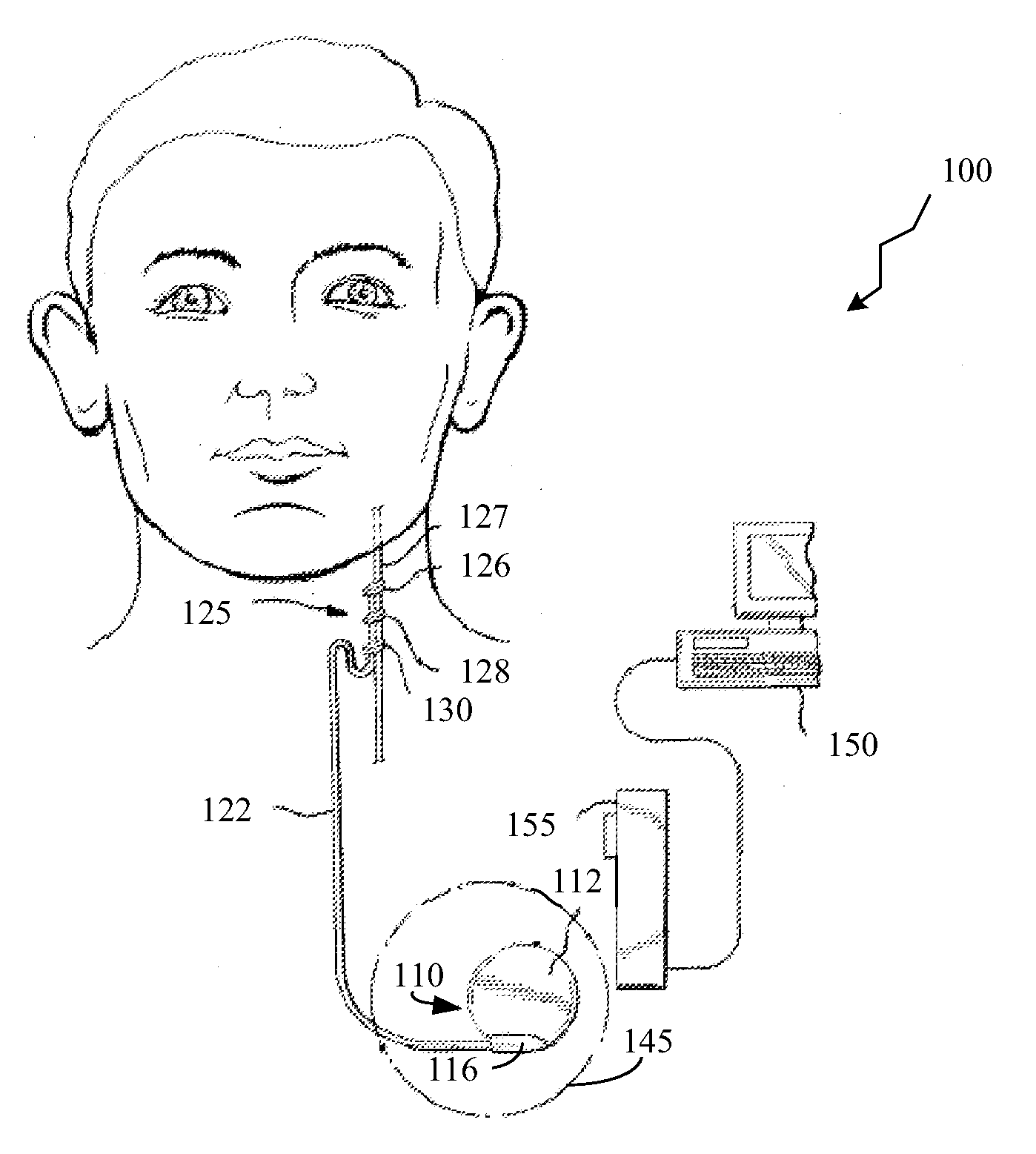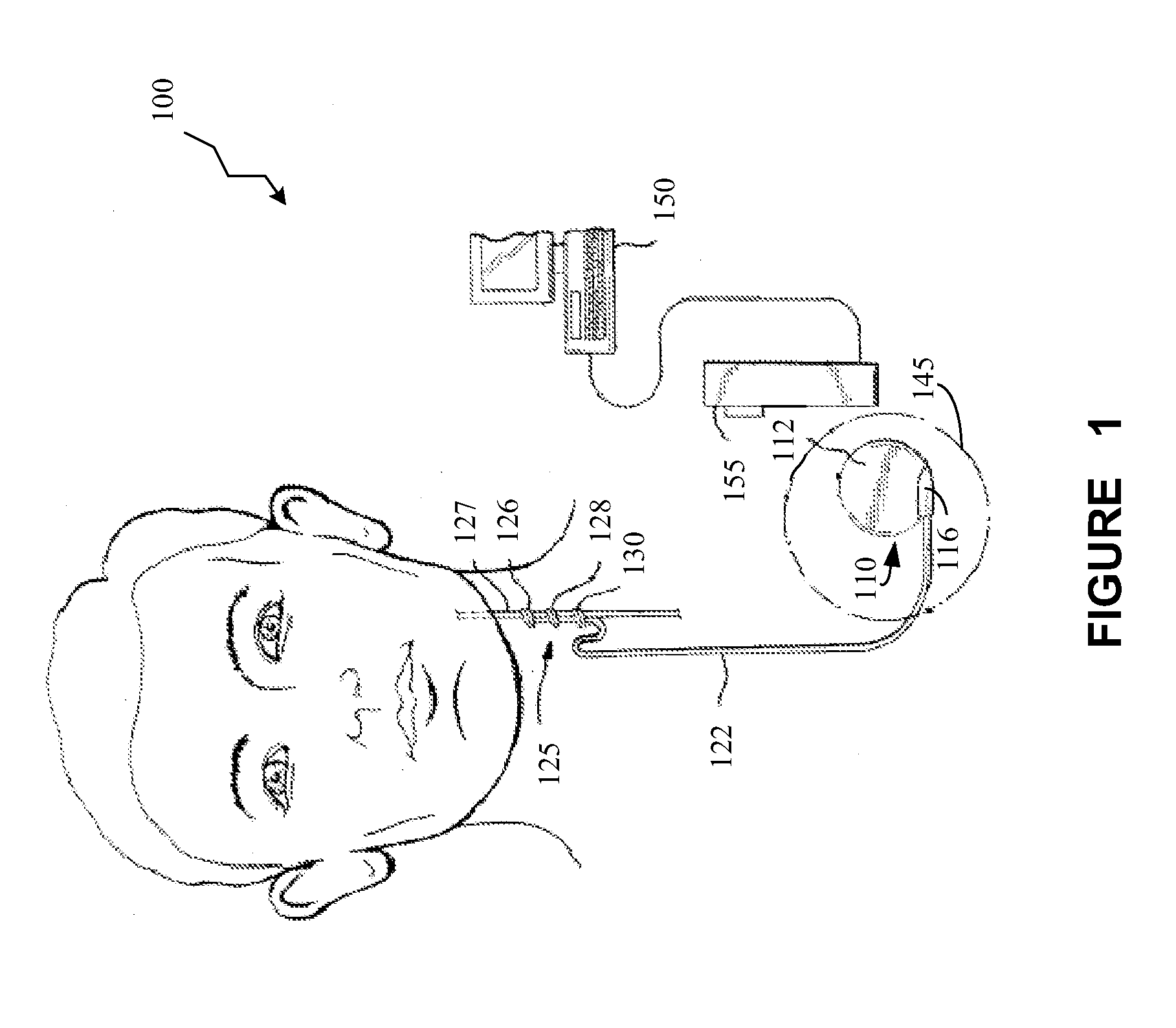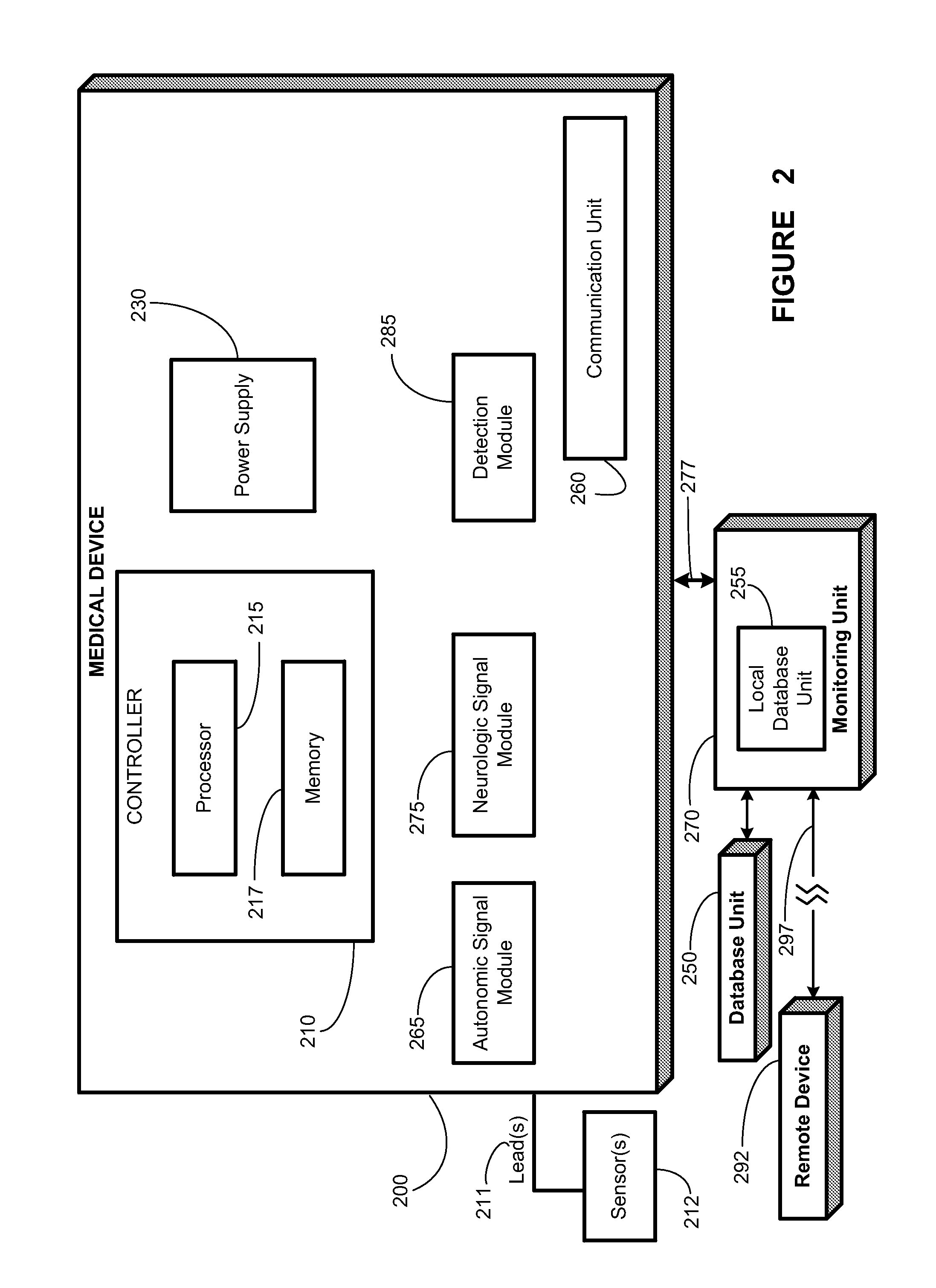Detecting, quantifying, and/or classifying seizures using multimodal data
a multi-modal data and detecting technology, applied in the field of detecting, quantifying, and/or classifying seizures, can solve the problems of increased mortality and morbidity, marked degeneration of patient quality of life, and seizures that impair motor control, so as to improve patient oral utterances or vocalizations, and reduce carbon dioxide content.
- Summary
- Abstract
- Description
- Claims
- Application Information
AI Technical Summary
Benefits of technology
Problems solved by technology
Method used
Image
Examples
Embodiment Construction
[0035]Illustrative embodiments of the invention are described herein. In the interest of clarity, not all features of an actual implementation are described in this specification. In the development of any such actual embodiment, numerous implementation-specific decisions must be made to achieve the design-specific goals, which will vary from one implementation to another. It will be appreciated that such a development effort, while possibly complex and time-consuming, would nevertheless be a routine undertaking for persons of ordinary skill in the art having the benefit of this disclosure.
[0036]This document does not intend to distinguish between components that differ in name but not function. In the following discussion and in the claims, the terms “including” and “includes” are used in an open-ended fashion, and thus should be interpreted to mean “including, but not limited to.” Also, the term “couple” or “couples” is intended to mean either a direct or an indirect electrical co...
PUM
 Login to View More
Login to View More Abstract
Description
Claims
Application Information
 Login to View More
Login to View More - R&D
- Intellectual Property
- Life Sciences
- Materials
- Tech Scout
- Unparalleled Data Quality
- Higher Quality Content
- 60% Fewer Hallucinations
Browse by: Latest US Patents, China's latest patents, Technical Efficacy Thesaurus, Application Domain, Technology Topic, Popular Technical Reports.
© 2025 PatSnap. All rights reserved.Legal|Privacy policy|Modern Slavery Act Transparency Statement|Sitemap|About US| Contact US: help@patsnap.com



